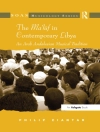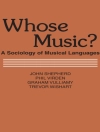Opera-comique, like grand opera, a specifically French genre of opera, emerged from the political changes and intellectual discussion that played a recurrent role in determining the nature of artistic expression and production in Paris from the late 17th until the mid-18th centuries. Opera-comique is distinguished by its use of spoken dialogue to link the arias and sung parts, and its more restrained use of recitatives. It emerged out of the popular entertainments, called operas-comiques en vaudevilles, that were a feature of the theatres held at the seasonal Parisian fairs of St Germain and St Laurent, and of the Comedie-Italienne. The similarity of the entertainments provided by the Comedie-Italienne and the fairs resulted in their amalgamation on 3 February 1756, when they established a theatre for their joint productions, the Hotel Bourgogne. Their type of entertainment, combining existing popular tunes with spoken sections, lent its generic name to this house, which, regardless of its changing venue, would become known as the Opera-Comique. The genre of opera-comique exercised a powerful popular appeal because of its unique fusion of fixed musical form with fluid improvised dialogue. The well-known airs of the day, invariably strophic, came to be the genre’s staple medium of artistic expression-the couplets. But opera-comique was not necessarily comic or light in nature. Indeed, the most famous example, Bizet’s Carmen (1875), is a tragedy. The genre, with its unique mixture of comedy and drama, its captivating musical fluency, its handling of serious and Romantic themes-expertly crafted by its most famous librettist Augustin-Eugene Scribe (1791-1861)-became universally popular in the masterpieces of its heyday between 1820 and 1870: Adrien Boieldieu’s La Dame blanche (1825), Daniel-Francois-Esprit Auber’s Fra Diavolo (1830) and Le Domino noir (1837), Ferdinand Herold’s Zampa (1831) and Le Pre aux clercs (1832), Fromental Halevy’s L’Eclair (1835) and Ambroise Thomas’s Mignon (1866).The history of the opera-comique between 1762 and 1915 reflects the political and cultural life of France-from the last days of the ancien regime, through the tumult of the Revolution and Napoleonic era, the July Monarchy and Second Empire, to the shattering defeat of France by Prussia in 1870. After this, apart from isolated works (by Bizet, Delibes, Offenbach, Massenet), new works by the younger generation of musicians now tended to be French adaptations of the Wagnerian aesthetic and the record of success is very thin. Hardly any native French works in this imitative mode premiered at the Opera-Comique between 1870 and 1915 have survived-apart from Debussy’s unique Pelleas et Melisande (1902).This study serves as a sourcebook for this very French genre, with details of forgotten composers, their operas-performance dates, plot summaries, the singers who created them, the names of important numbers in the works (from libretti and scores that are either now to be found only in the Paris libraries, or are lost completely), often with contemporary observations about the reception of particular works, the effectiveness of their dramaturgy and music. It provides a resource for operatic culture and convention, from the late 18th to the early 20th centuries. The record of the fortunes of the Opera-Comique provides a way into the changing culture and aesthetic values of an age.
Robert Ignatius Letellier
Opera-Comique [PDF ebook]
A Sourcebook
Opera-Comique [PDF ebook]
A Sourcebook
Купите эту электронную книгу и получите еще одну БЕСПЛАТНО!
Формат PDF ● страницы 780 ● ISBN 9781443821681 ● издатель Cambridge Scholars Publishing ● опубликованный 2010 ● Загружаемые 6 раз ● валюта EUR ● Код товара 2617327 ● Защита от копирования Adobe DRM
Требуется устройство для чтения электронных книг с поддержкой DRM












